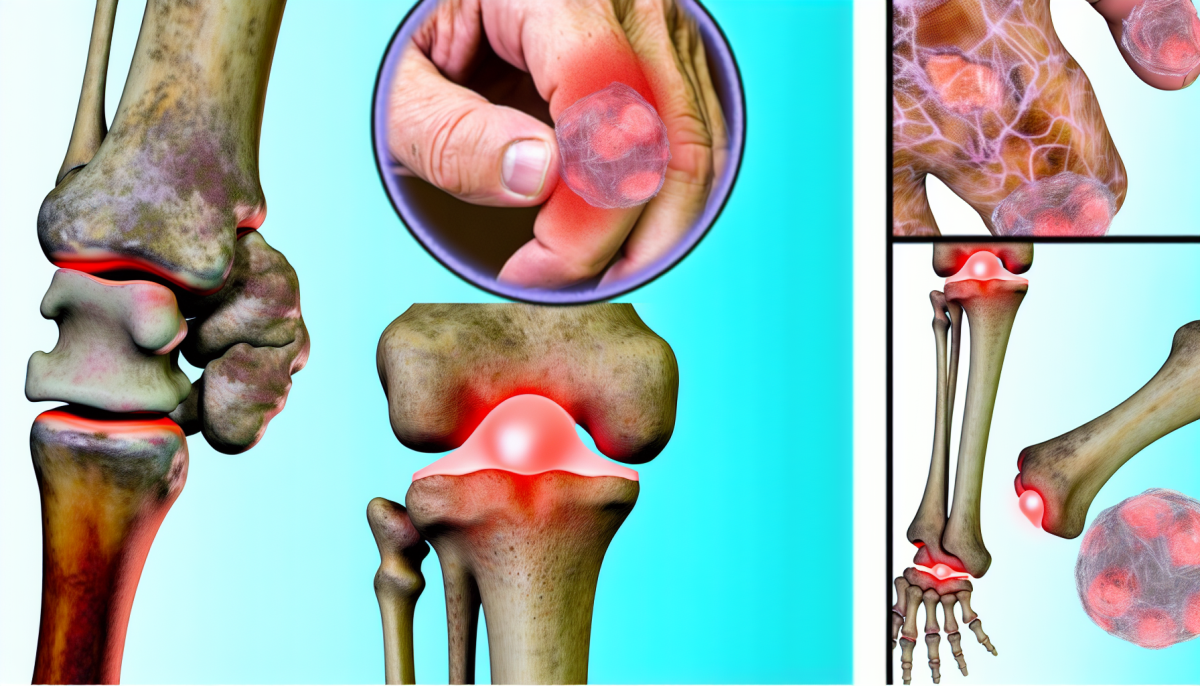Arthritis can sound pretty intimidating, but it really just means inflammation in the joints. Understanding the different types can help you figure out what’s going on if you’re experiencing joint pain. Let’s break down some of the most common types in a way that’s easy to understand.
Osteoarthritis is the most common type. Think of it as wear and tear on the joints over time. It usually creeps in as we age and can happen in any joint, but it loves knees and hips. If you feel stiffness after sitting or have joint pain that flares up with activity, this could be the reason.
Rheumatoid arthritis, on the other hand, is an autoimmune condition. This means the body’s immune system mistakenly attacks the joints. It often affects both sides of the body equally, like both hands or both knees. Symptoms can come and go, with flares making you feel fatigued and achy, even when you’re resting.
Psoriatic arthritis is another type that can show up if you have psoriasis, a skin condition that causes red patches with silver scales. This type can affect your nails, skin, and joints, often leading to inflammation and pain. If you have any skin issues along with joint pain, it might be worth checking in with a doctor.
There are other types, like gout and ankylosing spondylitis, but these are some of the most common ones. If you’re experiencing joint discomfort, knowing the type you're dealing with can help you and your healthcare provider find the right treatment.
Common Symptoms to Watch For
When it comes to arthritis, recognizing the warning signs can help you get the right support and treatment. Here are some common symptoms to keep an eye out for:
Not all symptoms will show up in every case, and severity can vary from person to person. It’s always a good idea to pay attention to your body. If you notice one or more of these signs, don’t hesitate to reach out to a healthcare professional for advice.
Staying informed about these symptoms can empower you to take charge of your health. The sooner you recognize something isn’t right, the quicker you can seek help and get back to feeling your best!
How Arthritis Affects Daily Life
Arthritis can really change how someone goes about their day-to-day activities. It’s not just about feeling stiffness in the joints; it can affect everything from getting out of bed in the morning to enjoying hobbies and spending time with family.
People living with arthritis often deal with chronic pain and fatigue. Simple tasks like cooking, cleaning, or even buttoning a shirt can become challenging. The joys of an active lifestyle might turn into a struggle, as certain movements can cause discomfort or even sharp pain. This can make it difficult to keep up with friends or family outings.
Not only can arthritis impact physical activities, but it can also take a toll on mental health. The frustration of dealing with limitations can lead to feelings of isolation or sadness. It’s important to remember that it’s okay to seek support, whether it’s through friends, family, or support groups. Sharing experiences with others who understand can make a big difference.
Finding ways to manage arthritis symptoms can greatly improve daily life. Many people benefit from physical therapy, gentle exercises, or even trying out different tools specifically designed to help with gripping or reaching. The key is to adapt activities and find what works best for you, so you can continue to enjoy life, even with arthritis.
Tips for Managing Arthritis Pain
Dealing with arthritis pain can be challenging, but there are some practical tips that can help you manage it better. First, staying active is key. Gentle exercises like walking, swimming, or yoga can keep your joints flexible and muscles strong. Just remember to listen to your body and avoid pushing yourself too hard.
Another effective strategy is to apply heat or cold to the affected areas. A warm bath or heating pad can help ease stiffness, while ice packs can reduce swelling and numb painful spots. Experiment with both methods to see what feels best for you.
Don’t overlook the power of a good diet! Eating anti-inflammatory foods, such as fruits, vegetables, whole grains, and omega-3 fatty acids found in fish, can make a big difference in how you feel. Staying hydrated is important too, so drink plenty of water throughout the day.
Lastly, consider talking to a healthcare professional about your pain management options. They can provide you with personalized advice and recommend over-the-counter pain relievers or even physical therapy to help you along the way.



